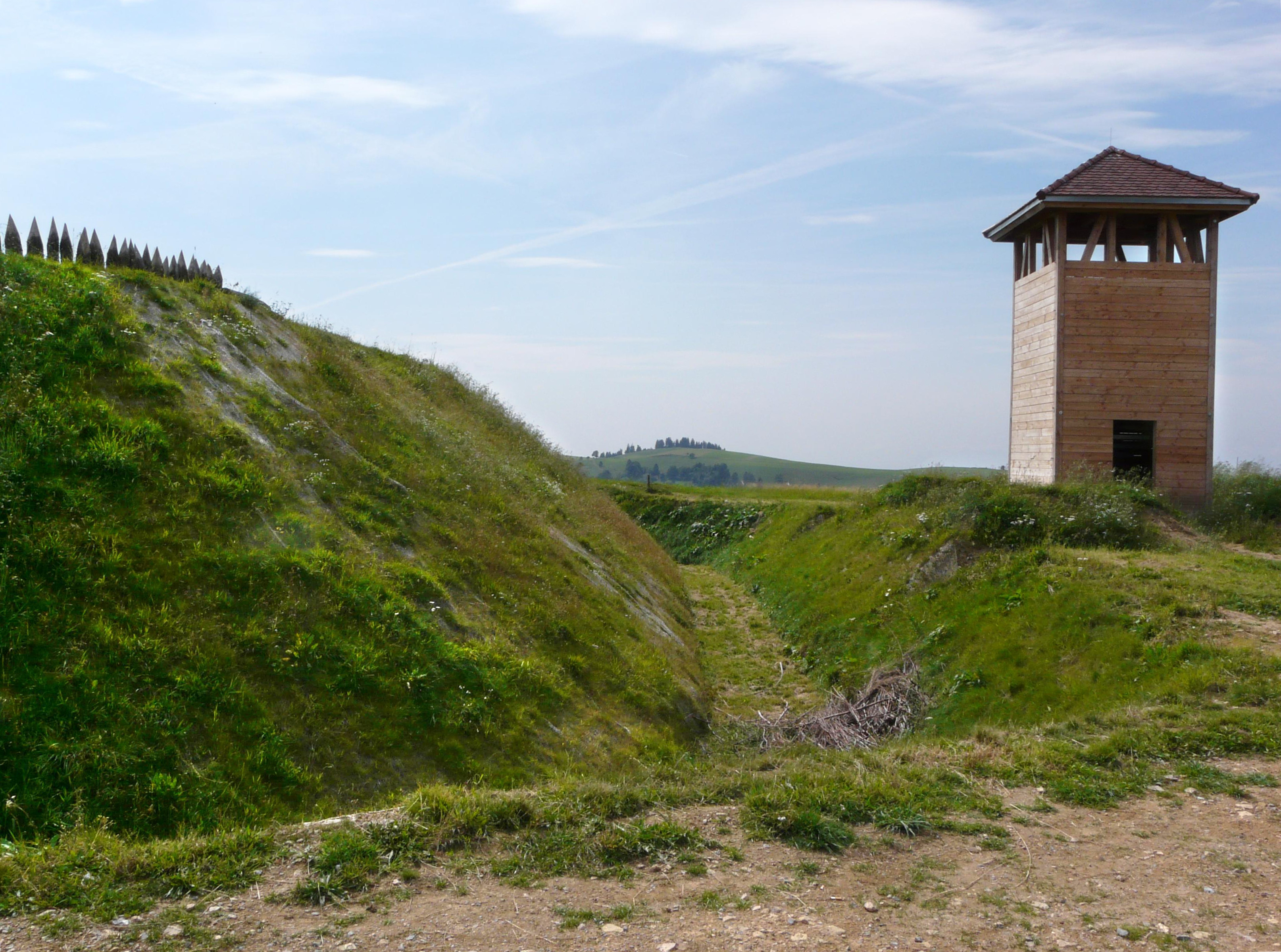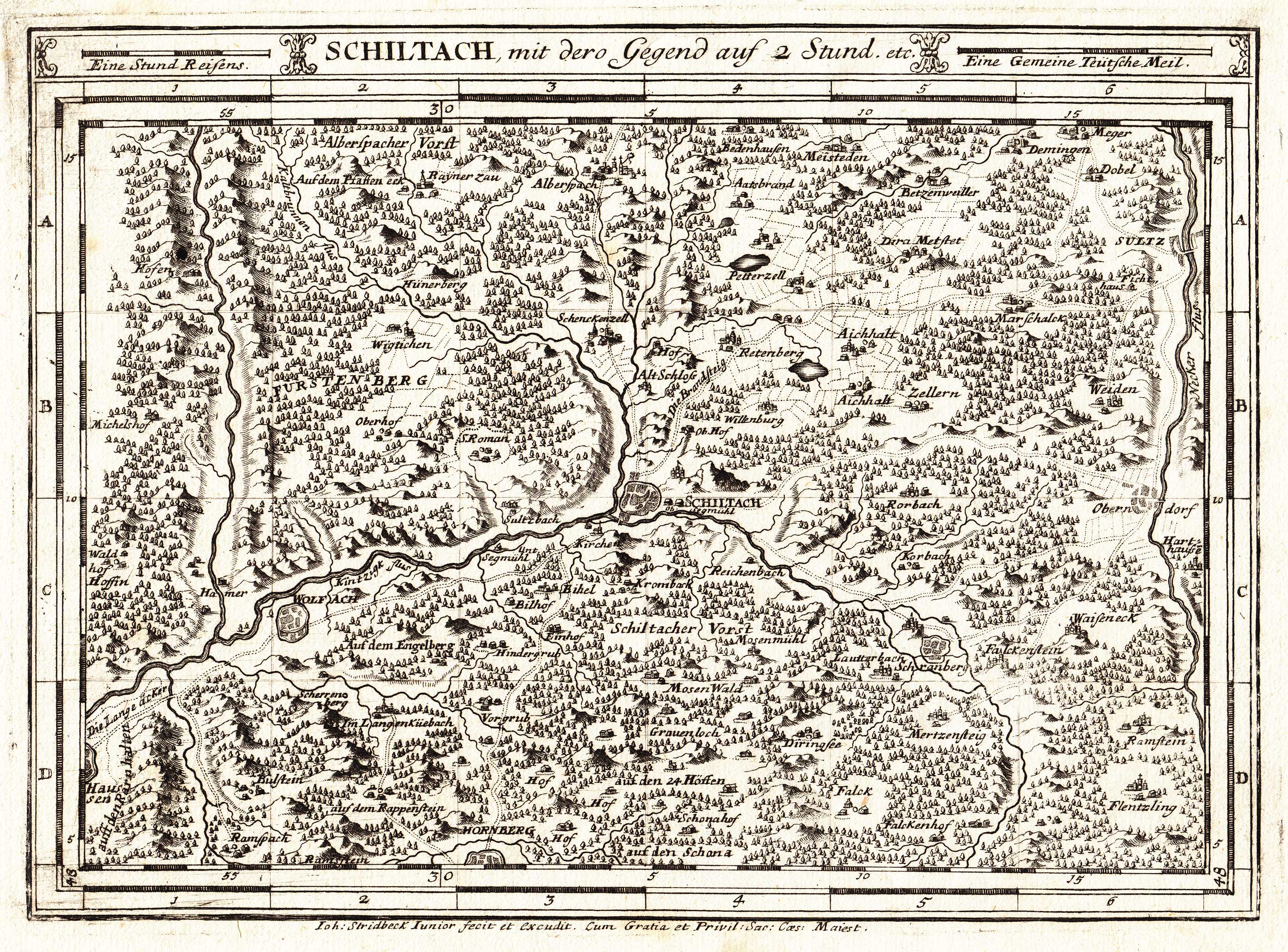|
Schwarzwald
The Black Forest (german: Schwarzwald ) is a large forested mountain range in the state of Baden-Württemberg in southwest Germany, bounded by the Rhine Valley to the west and south and close to the borders with France and Switzerland. It is the source of the Danube and Neckar rivers. Its highest peak is the Feldberg with an elevation of above sea level. Roughly oblong in shape, with a length of and breadth of up to , it has an area of about 6,009 km2 (2,320 sq mi). Historically, the area was known for forestry and the mining of ore deposits, but tourism has now become the primary industry, accounting for around 300,000 jobs. There are several ruined military fortifications dating back to the 17th century. History In ancient times, the Black Forest was known as , after the Celtic deity, Abnoba. In Roman times (Late antiquity), it was given the name ("Marcynian Forest", from the Germanic word ''marka'' = "border"). The Black Forest probably represented the bord ... [...More Info...] [...Related Items...] OR: [Wikipedia] [Google] [Baidu] |
Baroque Fortifications In The Black Forest
The Baroque fortifications in the Black Forest (german: link=no, Barocke Verteidigungsanlagen im Schwarzwald), also called Baroque Schanzen (''Barockschanzen'') or Black Forest lines (''Schwarzwaldlinien''), are historical, military earthworks, known as '' schanzen'', that were built in the Black Forest in what is now Germany. They were built in the 17th century to defend the Margraviate of Baden from French invasion. Together with their adjoining defensive lines, the Black Forest fortifications formed a defensive system over long that ran from north to south. Construction These defensive positions were built during the time of the conflicts between the House of Habsburg and the Kingdom of France in the 17th and 18th centuries, mainly during the War of the Palatine Succession and the War of the Spanish Succession. After the events of 1689 (including the destruction of Heidelberg Castle), Margrave Louis William of Baden-Baden (1655–1707), who was also known as "Turkish Lou ... [...More Info...] [...Related Items...] OR: [Wikipedia] [Google] [Baidu] |
Kinzig (Rhine)
The Kinzig is a river in southwestern Germany, a right tributary of the Rhine. It runs for 93 km from the Black Forest through the Upper Rhine River Plains. The Kinzig valley and secondary valleys constitute the largest system of valleys in the Black Forest. Depending on the definition, the Kinzig is either the border between the Northern and Middle Black Forest or part of the Middle Black Forest. It is located entirely inside the State of Baden-Württemberg and its name is supposed to be of Celtic origin. During the last glacial period the Kinzig and the Murg created a common Kinzig-Murg river system. Course of the river The origin of the Kinzig is located on the land of the town of Loßburg in the district of Freudenstadt. It runs south, then makes a gradual turn to the west. It leaves the district of Freudenstadt just after it emerges from Alpirsbach, touches the district of Rottweil and continues to spend the largest part of its course in the district of Ort ... [...More Info...] [...Related Items...] OR: [Wikipedia] [Google] [Baidu] |
Feldberg (Black Forest)
At the Feldberg in the Black Forest is the highest mountain in Baden-Württemberg, and the highest in Germany outside of the Alps. The local municipality of Feldberg was named after the mountain. Environment The Feldberg is situated southeast of Freiburg im Breisgau and is surrounded by the municipalities of Hinterzarten (northeast), Titisee (east), Menzenschwand (south), Bernau (also south) and Todtnau (southwest). About two kilometres southeast of the summit lies the village of Feldberg (). Between the main peak (, also known as the ''Höchste'' or "Highest", and its subpeak, the Seebuck (), just under away, is a saddle, the ''Grüble'', from which a wide spur, the Baldenweger Buck () branches off. The saddle initially descends gently and then ever more steeply into the valleys on either side. From the Seebuck the Feldberg drops steeply away to the northeast into the Feldsee, a lake of glacial origin at about altitude. Deeply incised valleys run northwest towards F ... [...More Info...] [...Related Items...] OR: [Wikipedia] [Google] [Baidu] |
Danube
The Danube ( ; ) is a river that was once a long-standing frontier of the Roman Empire and today connects 10 European countries, running through their territories or being a border. Originating in Germany, the Danube flows southeast for , passing through or bordering Austria, Slovakia, Hungary, Croatia, Serbia, Romania, Bulgaria, Moldova, and Ukraine before draining into the Black Sea. Its drainage basin extends into nine more countries. The largest cities on the river are Vienna, Budapest, Belgrade and Bratislava, all of which are the capitals of their respective countries; the Danube passes through four capital cities, more than any other river in the world. Five more capital cities lie in the Danube's basin: Bucharest, Sofia, Zagreb, Ljubljana and Sarajevo. The fourth-largest city in its basin is Munich, the capital of Bavaria, standing on the Isar River. The Danube is the second-longest river in Europe, after the Volga in Russia. It flows through much of Central ... [...More Info...] [...Related Items...] OR: [Wikipedia] [Google] [Baidu] |
Baden-Württemberg
Baden-Württemberg (; ), commonly shortened to BW or BaWü, is a German state () in Southwest Germany, east of the Rhine, which forms the southern part of Germany's western border with France. With more than 11.07 million inhabitants across a total area of nearly , it is the third-largest German state by both area (behind Bavaria and Lower Saxony) and population (behind North Rhine-Westphalia and Bavaria). As a federated state, Baden-Württemberg is a partly-sovereign parliamentary republic. The largest city in Baden-Württemberg is the state capital of Stuttgart, followed by Mannheim and Karlsruhe. Other major cities are Freiburg im Breisgau, Heidelberg, Heilbronn, Pforzheim, Reutlingen, Tübingen, and Ulm. What is now Baden-Württemberg was formerly the historical territories of Baden, Prussian Hohenzollern, and Württemberg. Baden-Württemberg became a state of West Germany in April 1952 by the merger of Württemberg-Baden, South Baden, and Württemberg-Hohe ... [...More Info...] [...Related Items...] OR: [Wikipedia] [Google] [Baidu] |
Abnoba
Abnoba is a name with theological and geographical meanings: It is the name of a Gaulish goddess who was worshiped in the Black Forest and surrounding areas. It is also the name of a mountain or mountain range. Etymology The etymology of the theonym is uncertain. It has been associated with the etymon *''abo-s'' "water, river", found in e.g. Avon (''*abonā''). The second element has been connected to either a PIE *''nogʷo-'', either "naked, nude" or "tree", or with the verbal root *''nebh-'' "burst out, be damp". Celtic polytheism Abnoba has been interpreted to be a forest and river goddess, and is known from about nine epigraphic inscriptions. One altar at the Roman baths at Badenweiler, Germany, and another at Mühlenbach identify her with Diana, the Roman goddess of the hunt. Geography Abnoba, sometimes spelt Arnoba or Arbona, has been used to refer to a mountain range comprising the Odenwald, Spessart, and Baar mountains. This composite range extends from the Rh ... [...More Info...] [...Related Items...] OR: [Wikipedia] [Google] [Baidu] |
Neckar
The Neckar () is a river in Germany, mainly flowing through the southwestern state of Baden-Württemberg, with a short section through Hesse. The Neckar is a major right tributary of the Rhine. Rising in the Schwarzwald-Baar-Kreis near Schwenningen in the ''Schwenninger Moos'' conservation area at a height of above sea level, it passes through Rottweil, Rottenburg am Neckar, Kilchberg, Tübingen, Wernau, Nürtingen, Plochingen, Esslingen, Stuttgart, Ludwigsburg, Marbach, Heilbronn and Heidelberg, before discharging on average of water into the Rhine at Mannheim, at above sea level, making the Neckar its 4th largest tributary, and the 10th largest river in Germany. Since 1968, the Neckar has been navigable for cargo ships via 27 locks for about upstream from Mannheim to the river port of Plochingen, at the confluence with the Fils. From Plochingen to Stuttgart, the Neckar valley is densely populated and heavily industrialised, with several well-known companies. Betw ... [...More Info...] [...Related Items...] OR: [Wikipedia] [Google] [Baidu] |
Swabia
Swabia ; german: Schwaben , colloquially ''Schwabenland'' or ''Ländle''; archaic English also Suabia or Svebia is a cultural, historic and linguistic region in southwestern Germany. The name is ultimately derived from the medieval Duchy of Swabia, one of the German stem duchies, representing the territory of Alemannia, whose inhabitants interchangeably were called '' Alemanni'' or ''Suebi''. This territory would include all of the Alemannic German area, but the modern concept of Swabia is more restricted, due to the collapse of the duchy of Swabia in the thirteenth century. Swabia as understood in modern ethnography roughly coincides with the Swabian Circle of the Holy Roman Empire as it stood during the Early Modern period, now divided between the states of Bavaria and Baden-Württemberg. Swabians (''Schwaben'', singular ''Schwabe'') are the natives of Swabia and speakers of Swabian German. Their number was estimated at close to 0.8 million by SIL Ethnologue as o ... [...More Info...] [...Related Items...] OR: [Wikipedia] [Google] [Baidu] |
Late Antiquity
Late antiquity is the time of transition from classical antiquity to the Middle Ages, generally spanning the 3rd–7th century in Europe and adjacent areas bordering the Mediterranean Basin. The popularization of this periodization in English has generally been credited to historian Peter Brown, after the publication of his seminal work '' The World of Late Antiquity'' (1971). Precise boundaries for the period are a continuing matter of debate, but Brown proposes a period between the 3rd and 8th centuries AD. Generally, it can be thought of as from the end of the Roman Empire's Crisis of the Third Century (235–284) to the early Muslim conquests (622–750), or as roughly contemporary with the Sasanian Empire (224–651). In the West its end was earlier, with the start of the Early Middle Ages typically placed in the 6th century, or earlier on the edges of the Western Roman Empire. The Roman Empire underwent considerable social, cultural and organizational changes startin ... [...More Info...] [...Related Items...] OR: [Wikipedia] [Google] [Baidu] |
Abnoba Mons
The Latin name Abnoba Mons (Pre-Germanic ''Abnoba''; Ancient Greek ''τὰ Ἄβνοβα'', ''ta Abnoba'', ''Abnobaia orē'') is the name of a mountain range that was already known to ancient authors Pliny and Tacitus. The name has been traditionally, primarily associated in historical research with the Black Forest. Ptolemy used the toponym in his A.D. 150 publication, ''Geographia'', as a mountain range lying within Germania magna () with its southern extent at 31° 49' and its northern extremity at 31° 52'. retrieved 27 June 2014 The geographer clearly did not restrict this name to present day Black Forest, but to a ... [...More Info...] [...Related Items...] OR: [Wikipedia] [Google] [Baidu] |








